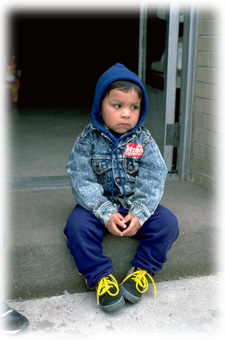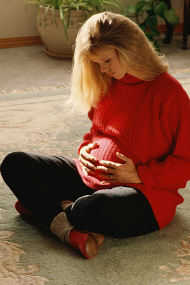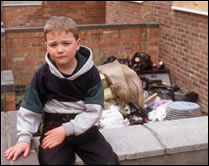 Deuteronomy 23:2 – Fatherlessness is the only sin carried down to the 10th generation, it’s the only one… here is why they need you!
Deuteronomy 23:2 – Fatherlessness is the only sin carried down to the 10th generation, it’s the only one… here is why they need you!
EFFECTS OF FATHERLESSNESS (US DATA)
1) BEHAVIORAL DISORDERS/ RUNAWAYS/ HIGH SCHOOL DROPOUTS/CHEMICAL
ABUSERS/ SUICIDES
85% of all children that exhibit behavioral disorders come from
fatherless homes (Source: Center for Disease Control) 90% of all
homeless and runaway children are from fatherless homes
(Source: U.S. D.H.H.S., Bureau of the Census) 71% of all high school dropouts come from fatherless homes (Source:
National Principals Association Report on the State of High Schools.)
75% of all adolescent patients in chemical abuse centers come from
fatherless homes (Source: Rainbows for all God’s Children.) 63% of youth suicides are from fatherless homes (Source: U.S. D.H.H.S., Bureau of the Census)
2) JUVENILE DELINQUENCY/ CRIME/ GANGS
80% of rapists motivated with displaced anger come from fatherless homes
(Source: Criminal Justice & Behavior, Vol 14, p. 403-26, 1978) 70% of
juveniles in state-operated institutions come from fatherless homes
(Source: U.S. Dept. of Justice, Special Report, Sept 1988) 85% of all
youths sitting in prisons grew up in a fatherless home
(Source: Fulton Co. Georgia jail populations, Texas Dept. of Corrections
1992)
California has the nation’s highest juvenile incarceration rate and the
nation’s highest juvenile unemployment rate. Vincent Schiraldi,
Executive Director, Center on Juvenile and Criminal Justice, “What
Hallinan’s Victory Means,” San Francisco Chronicle ( 12/28/95).
These statistics translate to mean that children from a fatherless home
are:
5 times more likely to commit suicide.
32 times more likely to run away.
20 times more likely to have behavioral disorders.
14 times more likely to commit rape
9 times more likely to drop out of high school.
10 times more likely to abuse chemical substances.
9 times more likely to end up in a state-operated institution.
20 times more likely to end up in prison.
Juveniles have become the driving force behind the nation’s alarming
increases in violent crime, with juvenile arrests for murder, rape,
robbery and aggravated assault growing sharply in the past decade as
pistols and drugs became more available, and expected to continue at the
same alarming rate during the next decade. “Justice Dept. Issues Scary
Report on Juvenile Crime,” San Francisco Chronicle ( 9/8/95). “Crime Wave
Forecast With Teenager Boom,” San Francisco Chronicle ( 2/15/95).
Criminal behavior experts and social scientists are finding intriguing
evidence that the epidemic of youth violence and gangs is related to the
breakdown of the two-parent family. “New Evidence That Quayle Was Right:
Young Offenders Tell What Went Wrong at Home,” San Francisco Chronicle
( 12/9/94).

3) TEENAGE PREGNANCY
“Daughters of single parents are 53% more likely to marry as teenagers,
164% more likely to have a premarital birth, and 92% more likely to
dissolve their own marriages. All these intergenerational consequences
of single motherhood increase the likelihood of chronic welfare
dependency.” Barbara Dafoe Whitehead, Atlantic Monthly (April 1993).
Daughters of single parents are 2.1 times more likely to have children
during their teenage years than are daughters from intact families. The
Good Family Man, David Blankenhorn.
71% of teenage pregnancies are to children of single parents. U.S. Dept.
of Health and Human Services.
4) CHILD ABUSE
The U.S. Department of Health and Human Services states that there were
more than 1,000,000 documented child abuse cases in 1990. In 1983, it
found that 60% of perpetrators were women with sole custody. Shared
parenting can significantly reduce the stress associated with sole
custody, and reduce the isolation of children in abusive situations by
allowing both parents’ to monitor the children’s health and welfare and
to protect them.
 5) POVERTY
5) POVERTY
“The National Fatherhood Institute reports that 18 million children live
in single-parent homes. Nearly 75% of American children living in
single-parent families will experience poverty before they turn 11. Only
20% in two-parent families will experience poverty.” Melinda Sacks,
“Fatherhood in the 90’s: Kids of absent fathers more “at risk”,” San
Jose Mercury News ( 10/29/95).
“The feminization of poverty is linked to the feminization of custody,
as well as linked to lower earnings for women. Greater opportunity for
education and jobs through shared parenting can help break the cycle.”
David Levy, Ed., The Best Parent is Both Parents (1993).
6) KIDNAPPING
Family abductions were 163,200 compared to non-family abductions of
200-300. The parental abductions were attributed to the parents’
disenchantment with the legal system. David Levy, Ed., The Best Parent
is Both Parents (1993), citing a report from the U.S. Department of
Justice, Office of Juvenile Justice (May 1990).








